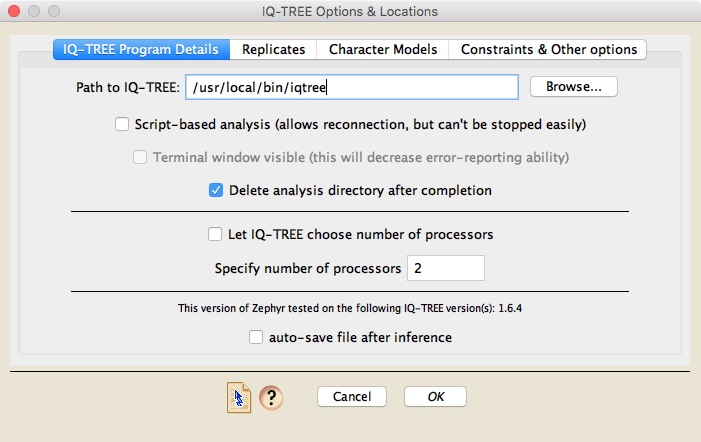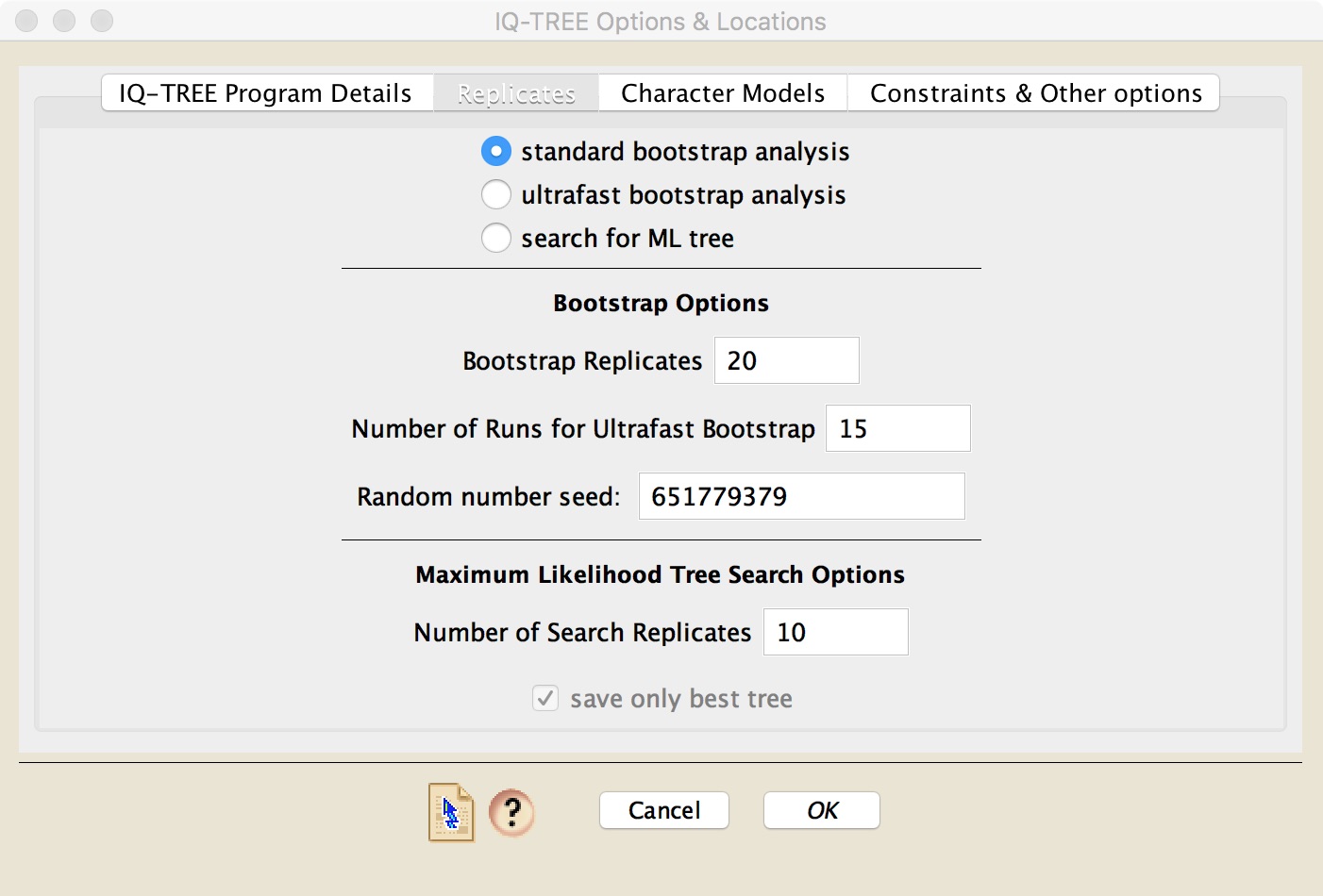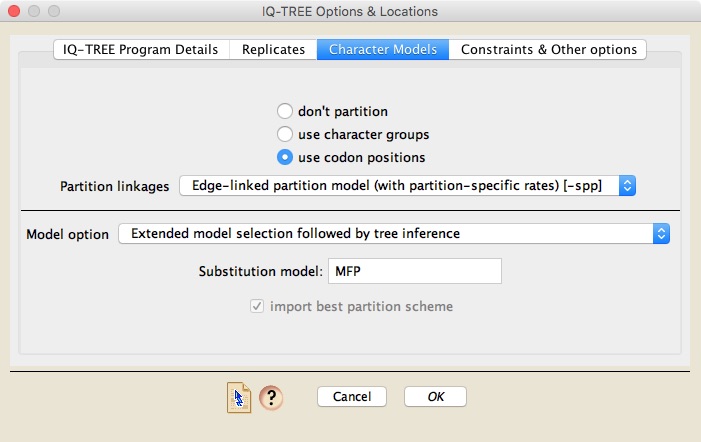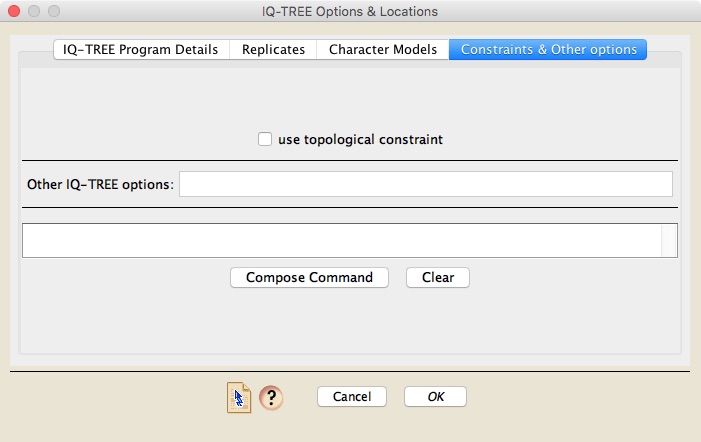IQ-TREE
IQ-TREE is a program for maximum likelihood inference of phylogenies, written by Bui Quang Minh and other code contributors. For details about IQ-TREE go to the IQ-TREE web page.
IQ-TREE is distributed as an app within Mesquite, and thus doesn't require a separate installation.
You can, if you wish, install other versions of IQ-TREE, and ask Mesquite to use those versions instead. To obtain other versions, see the IQ-TREE web page.
If you use IQ-TREE, please cite it appropriately as recommended in the program's documentation.
The IQ-TREE dialog box within Zephyr has four panels. The first panel ("IQ-TREE Program Details") has the standard Zephyr options; it varies depending upon whether you are running IQ-TREE locally on your computer (the same computer that has Mesquite on it), or on an SSH server.
If you have asked for the "IQ-TREE Likelihood [Local]" option, then you can also choose the number of processors that will be used for the analysis. If you choose "Let IQ-TREE choose the number of processors", this in general will work best, except in unusual circumstances (in which case you will receive an error message in the log window from IQ-TREE).

The second panel allows you to choose the type of analysis that will be done: a standard bootstrap analysis, and ultrafast bootstrap analysis, or a basic search for the maximum likelihood tree.

A key panel is the third one, in which you ask IQ-TREE what models of character evolution to use.

The first secion of the above panel lets you specify whether or not to use a partition, and how to treat the rates of different parts of a partition; the second section the model of character evolution, including whether different parts of different models. If you choose "don't partition", IQ-TREE will treat all sites as one part; if you choose "use character groups", it will use any character groups you have specified as the parts of a partition; if you choose "use codon positions" it will use the codon positions you have defined.
Under "Partition linkages" you can choose one of three options regarding how branch lengths and partitions interact:
- Edge-linked partition model [the -q option]
- Edge-linked partition model (with partition-specific rates) [the -spp option]. This is the recommended option; for it, all branches have one set of relative rates for all partition elements, but the different partitions can have different overall rates.
- Edge-unlinked partition model (like -M option of RAxML) [the -sp option]
See the IQ-TREE documentation for more details.
Under "Model option" you can choose how the model of character evolution and the partition scheme is
- Standard model selection (like jModelTest, ProtTest)
- Standard model selection followed by tree inference
- Extended model selection with FreeRate heterogeneity
- Extended model selection followed by tree inference
- Find best partition scheme (like PartitionFinder)
- Find best partition scheme followed by tree inference
- Find best partition scheme inc FreeRate heterogeneity
- Find best partition scheme inc FreeRate heterogeneity followed by tree inference
- or, you can enter a specific model into the field below
When you use one of these, Zephyr puts into the field the specification of IQ-TREE's "-m" option. See the IQ-TREE documentation for more details here and here.
The final panel allows you to specify a topological constraint (Zephyr will ask you for the tree to use as the constraint), and a text field in which you can enter addition IQ-TREE options otherwise not available within Mesquite's graphical user interface.

